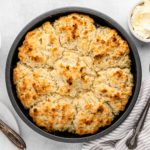A southern classic, this homemade cathead biscuits recipe is named for its similar size to a cat head. Cathead biscuits are buttery, tender, and easily made as there is no need for a biscuit cutter or kneading.
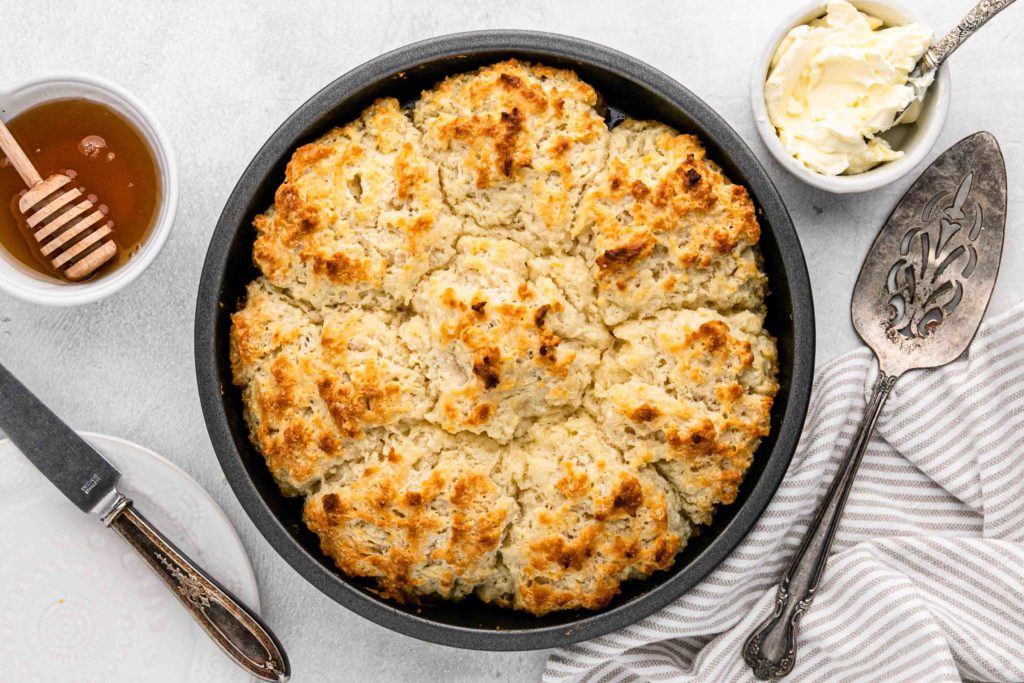
Oh, the memories that come flooding in with the smell of freshly baked biscuits! Growing up, there was nothing quite like waking up to the aroma of my grandmother’s cathead biscuits on a Sunday morning.
Yes, you heard that right – “cathead.” Funny name, isn’t it? It’s a nod to their larger than life size, about as big as a cat’s head. As kids, we’d chuckle at the name while eagerly waiting for them to come out of the oven.
Served warm with berry jam, butter, or sometimes a rich sausage gravy. Every bite brings a feeling of comfort, nostalgia, and warmth we try to replicate every time these are made. I hope you have these same feelings when enjoying cathead biscuits yourself!
Why You’ll Love This Cathead Biscuits Recipe
With one buttery mouthful, you’ll fall in love, but if you need to be convinced further;
- Size – As the name implies these biscuits are large and in charge. Offering a hearty and satisfying bite every time.
- Simple Ingredients – Made with pantry staples you’re reminded that you can make even the most delicious recipes with simple ingredients.
- Versatility – With a strong exterior and a soft and buttery interior you can easily serve cathead biscuits with savory gravies and butters to jams and jellies.
Ingredients Needed
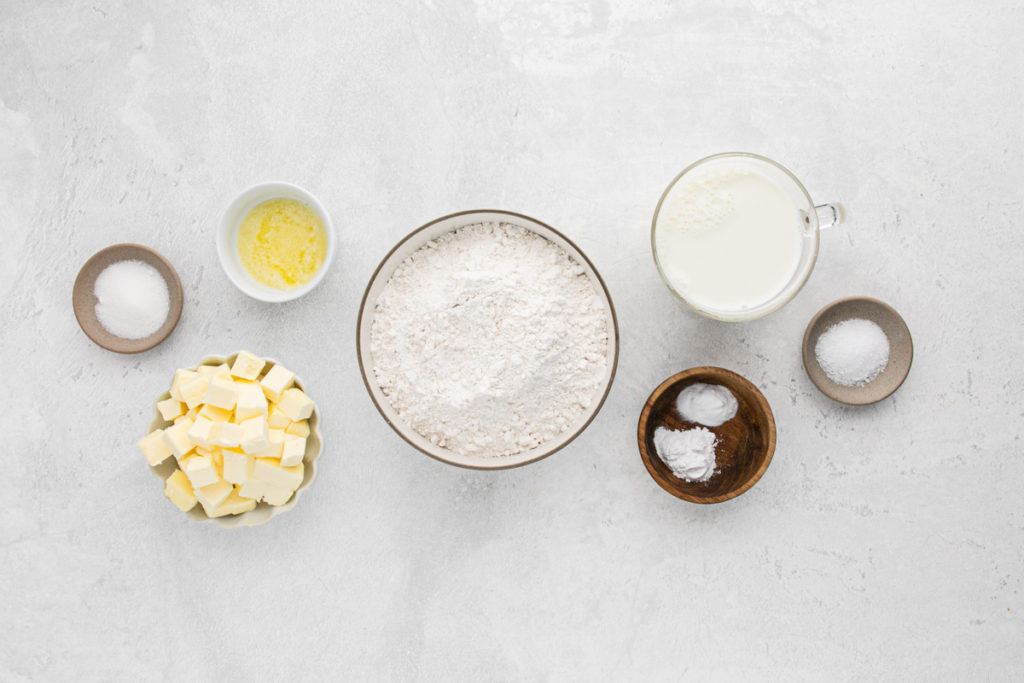
- Unsalted butter, melted: Used for brushing the baking pan, this creates a non-stick surface and adds a hint of buttery flavor to the bottom.
- All-purpose flour: The main structure of the biscuits. It provides the bulk and body, allowing the biscuits to rise and maintain their shape.
- Kosher salt: Enhances the flavor of the biscuits. Salt enhances the buttery flavors and balances the sweetness, giving a well-rounded taste.
- Granulated sugar: Adds a subtle sweetness to the biscuits. While not making them overtly sweet, it complements the savory elements.
- Baking powder: A leavening agent, baking powder helps the biscuits rise and become fluffy.
- Baking soda: Another leavening agent. In the presence of an acid like buttermilk, baking soda activates and gives the biscuits their lift and tender crumb.
- Unsalted butter, cold, cubed: The key to flaky biscuits. When cold butter melts during baking, it releases steam, creating layers and pockets in the biscuits, making them light and airy. Using frozen butter can help to keep the butter chilled while making the biscuits.
- Buttermilk, cold: Adds acidity, which, when combined with baking soda, aids in leavening. Buttermilk also imparts a tangy flavor and contributes to the overall tenderness of the biscuits.
How To Make Cathead Biscuits
- Preheat the oven to 425F. Place the rack in the middle position. Prep a 9-inch cake pan by brushing with 1 tablespoon of melted butter over the bottom and sides.
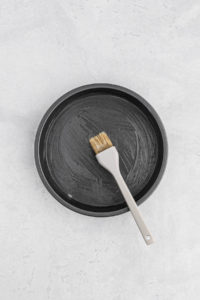
- In a large bowl, mix together, flour, salt, sugar, baking powder, and baking soda. Add in cold cubed butter. Using two forks or a pastry blender, cut butter into the flour until all the butter is coated, and the butter is about the size of peas.
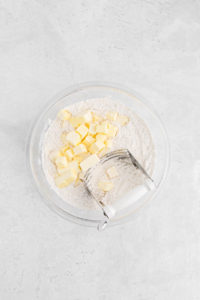
- Using a spatula, mix in buttermilk until just combined and most of the flour is absorbed.
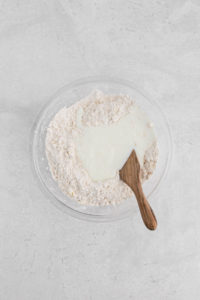
- Divide dough into eighths and using a ½ cup measure, scoop dough into prepared pan.
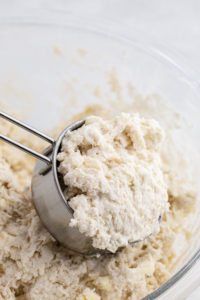
- Bake until the tops are craggy and deep golden brown, about 22-25 minutes.
Tips For Making The Best Cathead Biscuits Recipe
Only a couple of expert tips to make this foolproof biscuit recipe stand out.
- Always use cold butter and cold buttermilk. This ensures flaky biscuits.
- Don’t overmix! Overworking the dough can lead to tough biscuits.
- For an added touch, brush the tops with melted butter just before they’re done for a beautiful shine and rich flavor.
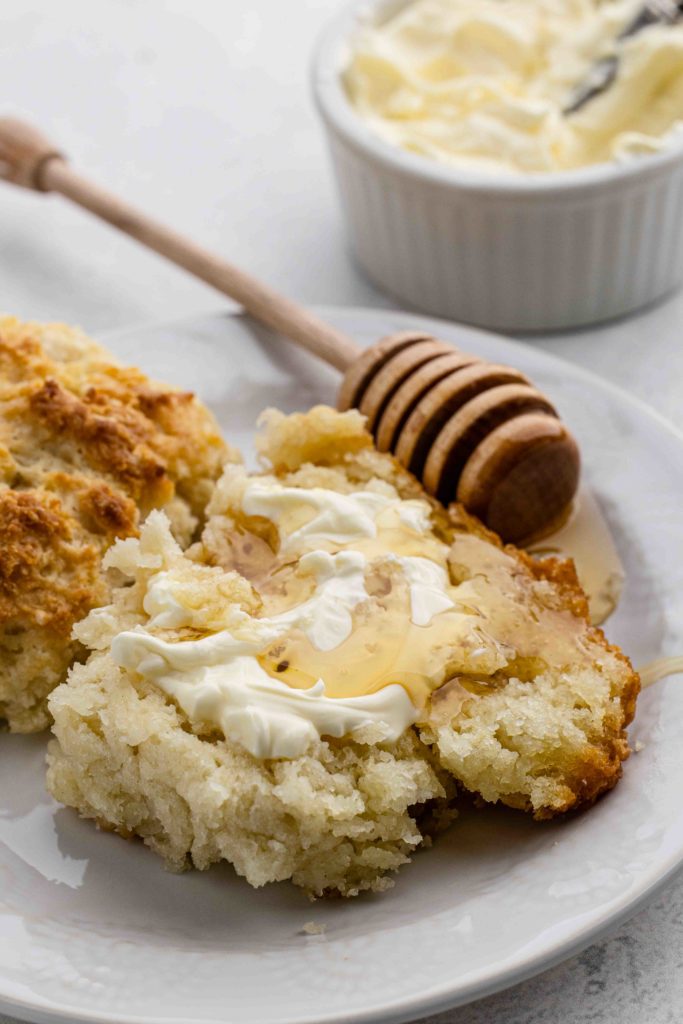
Where To Serve Cathead Biscuits
Pair these cathead biscuits with your favorite jams, honey, or even gravy! Perfect for breakfast, brunch, or alongside a rich and comforting dinner.
- Sawmill Gravy (sausage gravy): Made with smoky pork sausage, smooth cream, and chicken stock. A must have at a southern breakfast table.
- Whipped Honey Butter: This honey butter is perfect for cathead biscuits, cornbread, or even melted as a sauce or drizzle!
- Shrimp and Grits Casserole: Perfect for brunch, potlucks, or weeknight dinner, our cathead biscuits will be right there to complement your shrimp and grits casserole.
- One Pot Cajun Gumbo: Don’t let any of those flavors go to waste and clean up those drippings with a biscuit or two!
- Slow Cooker Brunswick Stew: A stew’s favorite companion. Serve a warm batch of cathead biscuits with a steamy bowl of Brunswick stew.
How to Store & Reheat Cathead Biscuits
After the biscuits have completely cooled to room temperature, place them in an airtight container or resealable plastic bag to prevent them from drying out. Store at room temperature for up to 2 days.
Refrigeration: Properly sealed biscuits can be stored for up to a week in the fridge.
Freezer: Wrap the entire batch of cathead biscuits together or individually in plastic wrap, then place in a freezer safe container or plastic bag. Be sure to squeeze out any excess air. Freeze cathead biscuits for up to 3 months.
Reheating room temperature or refrigerated biscuits: Preheat your oven to 350F. Place biscuits on a baking sheet and heat for 10-15 minutes or until heated through.
Reheating from frozen: Allow the frozen biscuits to thaw out overnight in the refrigerator before reheating. Once thawed, follow the instructions above for reheating.
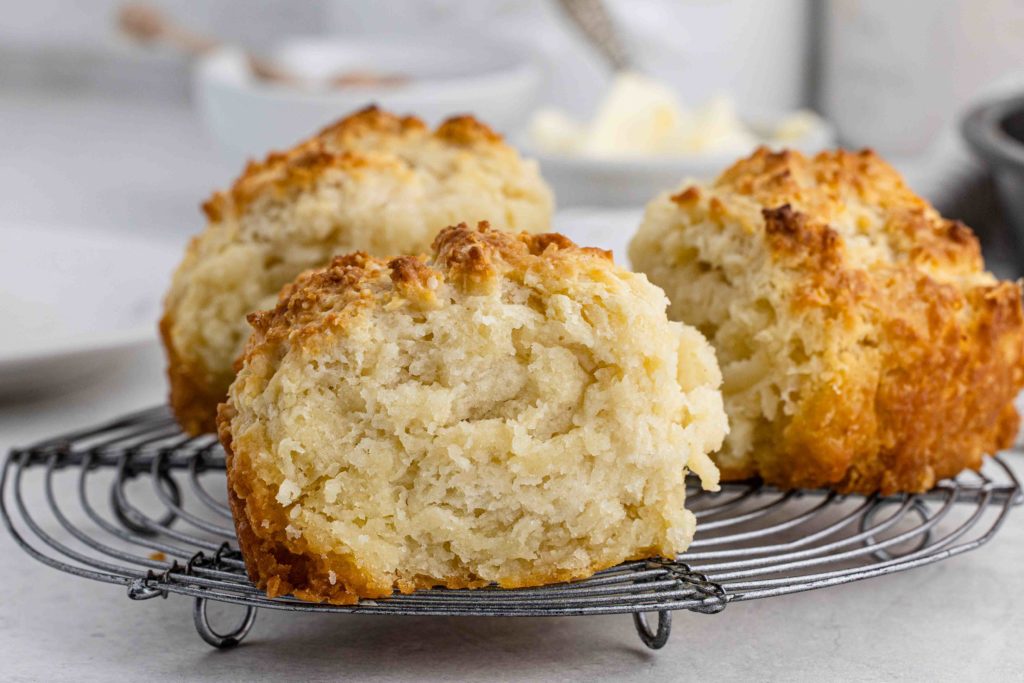
Frequently asked questions
Why are they called cathead biscuits?
Traditionally southern, these cathead biscuits are larger in size, about the size and shape of a cats head. Cathead biscuits are buttery and fluffy in texture.
Why are my biscuits not rising in the oven?
There could be a few reasons for your biscuits not rising properly. Firstly, your baking soda or baking powder could be expired. Other reasons could be that the biscuit dough was overworked, or that the butter and buttermilk were too warm not allowing the biscuits to create that fluffy layering effect.
Can I use milk instead of buttermilk?
While buttermilk does provide a slight tangy flavor and creates a reaction with the baking soda for rise, you can use milk. However, it’s recommended that you add lemon juice or vinegar to the milk to replicate the acidity of buttermilk.
How do I get a crispier biscuit exterior?
For a slightly crispier biscuit, brush the top with a thin layer of melted butter before baking.
More Biscuit Recipes To Enjoy!
Cathead Biscuits
Ingredients
- 1 tbsp unsalted butter melted
- 3 cups all-purpose flour
- 1 1/2 tsp kosher salt
- 1 1/2 tsp granulated sugar
- 1 1/2 tbsp baking powder
- 3/4 tsp baking soda
- 1 cup unsalted butter cold and cubed
- 1 3/4 cup buttermilk cold
Instructions
- Heat your oven to 425F and set the rack in the center. Prepare a 9-inch cake pan by evenly coating the bottom and sides with 1 tablespoon of butter.
- Combine flour, salt, sugar, baking powder, and baking soda in a large bowl. Add cold cubed butter. Using a pastry blender or two forks, work the butter into the flour until it's fully coated and the pieces are pea-sized.
- Gently fold in buttermilk with a spatula, just until the dough comes together and most of the flour is moistened.
- Section the dough into eight parts and use a ½ cup measure to place dough portions into the buttered pan.
- Bake until the tops of the dough are rugged and turn a deep golden brown, about 22-25 minutes.

